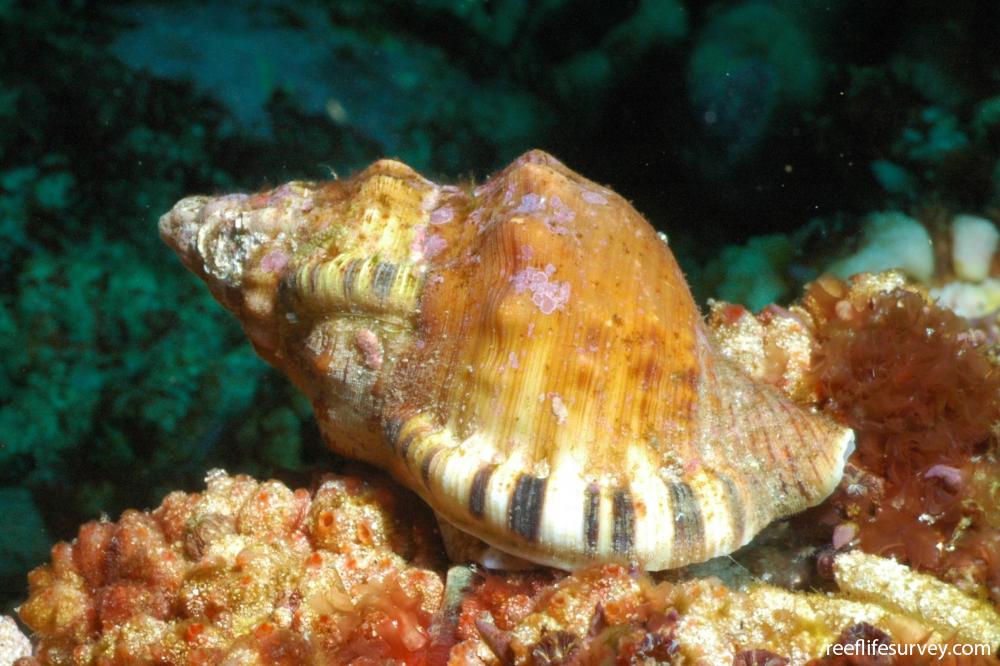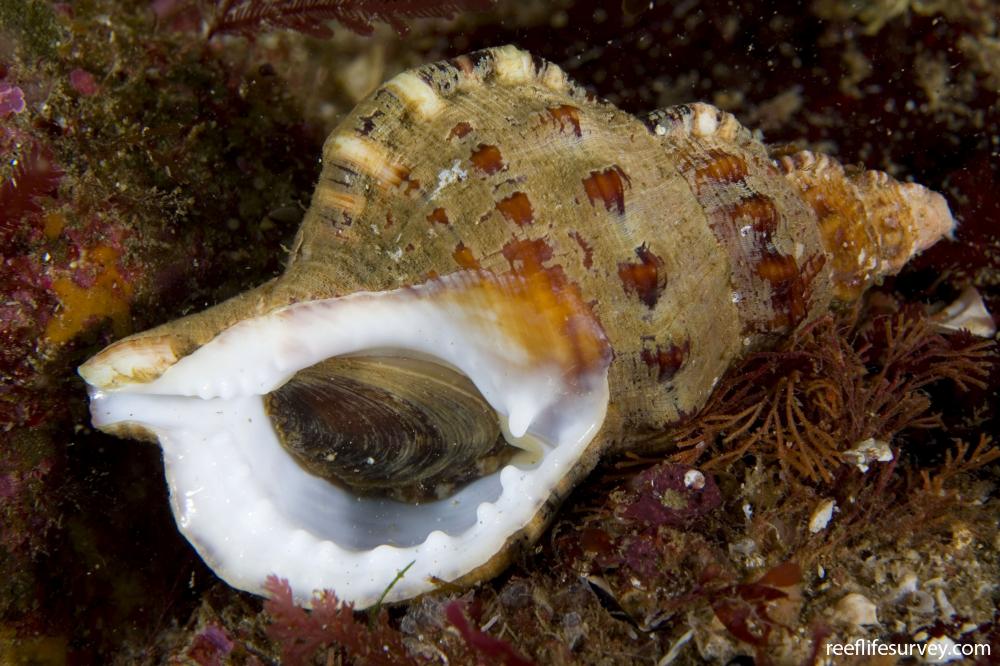Ranella australasia
Australian rock whelk | Mayena australisSimilar Species
Distribution
Temperate Australasia
Description
Brown shell with a high spire, low ridges around the whorls and relatively wide aperture. Albinistic specimens are common in some colonies. Animals along the southern coast are less often seen than those on New South Wales reefs but grow to a larger size. Specimens are also occasionally trawled from the edge of the continental shelf.
Information
Max Size: 11 cm
Sea Temperature Range: 11.6-24.6°C
Depth: 0-200m
Habitat Generalization Index: N/A
Also referred to as the SGI (Species Generalisation Index), this describes the habitat niche breadth of the species. Species with values less than 15 are found in a relatively narrow range of reef habitat types (specialists), while those over 25 may be found on most hard substrates within their range (generalists). Learn more here.
Conservation and Rarity
IUCN Status: Not Evaluated
Occurrence: Common (25.9% of sites)
Occurrence describes how often the species is found on surveys within its distribution. It is calculated as the % of reef sites surveyed by RLS divers across all the ecoregions in which the species has been observed
Abundance: Few (2 per transect)
Abundance is calculated as the average number of individuals recorded per RLS transect, where present.
Edit by: GJ Edgar. 2008. Australian Marine Life. New Holland, Sydney

















